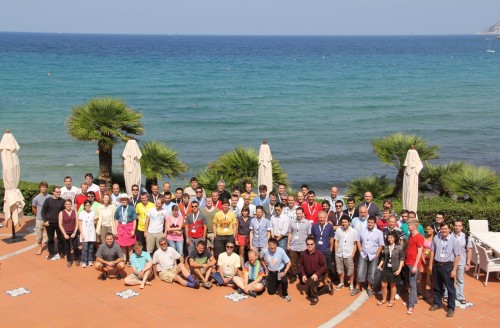Bringing C code to the modern world
The C2Eif translator developed by Marco Trudel takes C code and translates it into Eiffel; it produces not just a literal translation but a re-engineering version exhibiting object-oriented properties. Trudel defended his PhD thesis last Friday at ETH (the examiners were Hausi Muller from Victoria University, Manuel Oriol from ABB, Richard Paige from the University of York, and me as the advisor). The thesis is not yet available online but earlier papers describing C2Eif are, all reachable from the project’s home page [1].
At issue is what we do with legacy code. “J’ai plus de souvenirs que si j’avais mille ans”, wrote Charles Baudelaire in Les Fleurs du Mal (“Spleen de Paris”). The software industry is not a thousand years old, but has accumulated even more “souvenirs” than
A heavy chest of drawers cluttered with balance-sheets,
Poems, love letters, lawsuits, romances
And heavy locks of hair wrapped in invoices.
We are suffocating under layers of legacy code heaped up by previous generations of programmers using languages that no longer meet our scientific and engineering standards. We cannot get rid of this heritage; how do we bring it to the modern world? We need automatic tools to wrap it in contemporary code, or, better, translate it into contemporary code. The thesis and the system offer a way out through translation to a modern object-oriented language. It took courage to choose such a topic, since there have been many attempts in the past, leading to conventional wisdom consisting of two strongly established opinions:
- Plain translation: it has been tried, and it works. Not interesting for a thesis.
- Object-oriented reengineering: it has been tried, and it does not work. Not realistic for a thesis.
Both are wrong. For translation, many of the proposed solutions “almost work”: they are good enough to translate simple programs, or even some large programs but on the condition that the code avoids murky areas of C programming such as signals, exceptions (setjmp/longjmp) and library mechanisms. In practice, however, most useful C programs need these facilities, so any tool that ignores them is bound to be of conceptual value only. The basis for Trudel’s work has been to tackle C to OO translation “beyond the easy stuff” (as stated in the title of one of the published papers). This effort has been largely successful, as demonstrated by the translation of close to a million lines of actual C code, including some well-known and representative tools such as the Vim editor.
As to OO reengineering, C2Eif makes a serious effort to derive code that exhibits a true object-oriented design and hence resembles, in its structure at least, what a programmer in the target language might produce. The key is to identify the right data abstractions, yielding classes, and specialization properties, yielding inheritance. In this area too, many people have tried to come up with solutions, with little success. Trudel has had the good sense of avoiding grandiose goals and sticking to a number of heuristics that work, such as looking at the signatures of a set of functions to see if they all involve a common argument type. Clearly there is more to be done in this direction but the result is already significant.
Since Eiffel has a sophisticated C interface it is also possible to wrap existing code; some tools are available for that purpose, such as Andreas Leitner’s EWG (Eiffel Wrapper Generator). Wrapping and translating each have their advantages and limitations; wrapping may be more appropriate for C libraries that someone else is still actively updating (so that you do not have to redo a translation with every new release), and translation for legacy code that you want to take over and bring up to par with the rest of your software. C2Eif is engineered to support both. More generally, this is a practitioner’s tool, devoting considerable attention to the many details that make all the difference between a nice idea and a tool that really works. The emphasis is on full automation, although more parametrization has been added in recent months.
C2Eif will make a big mark on the Eiffel developer community. Try it yourself — and don’t be shy about telling its author about the future directions in which you think the tool should evolve.
Reference
[1] C2Eif project page, here.

 Informatics Europe
Informatics Europe LASER summer school
LASER summer school Propulsion Academy
Propulsion Academy